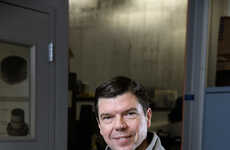
NASA is Employing Generative Design Algorithms to Enhance Performance
Kalin Ned — July 21, 2020 — Art & Design
NASA's next-generation space suit is projected to "be worn by astronauts when they return to the moon in 2024 as part of the agency's plan to establish a permanent human presence on the lunar surface." Given that the mission is quite taxing and high-stakes, NASA tapped state-of-the-art technology and artificial intelligence algorithms to ensure optimal performance for the astronaut's gear.
The Extravehicular Mobility Unit (xEMU) is one of the major upgrades and it will allow astronauts to "bend and stretch in ways they couldn't before." The next-generation space suit also boasts a portable life-support system that "handles the space suit’s power, communications, oxygen supply, and temperature regulation." Thanks to this, astronauts can focus on much more important tasks. These components are designed by artificial intelligence, in a process better known as generative design.
Image Credit: Joel Kowsky/NASA
The Extravehicular Mobility Unit (xEMU) is one of the major upgrades and it will allow astronauts to "bend and stretch in ways they couldn't before." The next-generation space suit also boasts a portable life-support system that "handles the space suit’s power, communications, oxygen supply, and temperature regulation." Thanks to this, astronauts can focus on much more important tasks. These components are designed by artificial intelligence, in a process better known as generative design.
Image Credit: Joel Kowsky/NASA
Trend Themes
1. Generative Design Algorithms - NASA is employing generative design algorithms to enhance the performance of next-generation space suits, allowing for optimal design and functionality.
2. State-of-the-art Technology - NASA is utilizing state-of-the-art technology to develop next-generation space suits with improved capabilities and features.
3. Artificial Intelligence Integration - Next-generation space suits are being designed with the integration of artificial intelligence, allowing for advanced performance optimization and improved functionality.
Industry Implications
1. Aerospace - The aerospace industry can benefit from the development of next-generation space suits, as the technologies and design methodologies employed can pave the way for innovative advancements in astronaut gear.
2. Artificial Intelligence - The artificial intelligence industry can explore opportunities to further integrate AI algorithms into different applications, such as generative design for optimizing performance in various fields.
3. Technology - The technology industry can explore the use of state-of-the-art technology in different domains, including wearable gear and specialized equipment, inspired by NASA's advancements in next-generation space suits.
2.2
Score
Popularity
Activity
Freshness
























